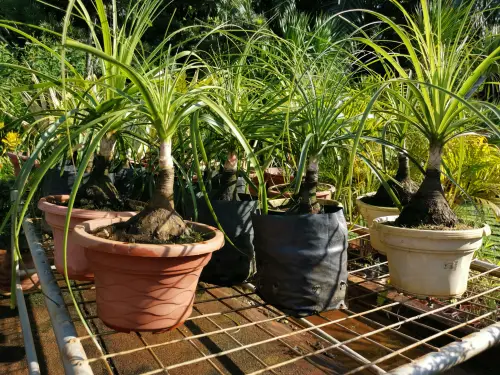Yucca plants are known for their striking, sword-shaped leaves and ability to thrive in hot, dry climates. However, if you notice your yucca plant drooping, it could be a sign of a problem. Understanding the common causes of drooping in yucca plants can help you identify and address the issue before it’s too late.
Overwatering is one of the most common causes of drooping in yucca plants. These plants are adapted to survive in arid conditions and can quickly succumb to root rot if they are given too much water.
On the other hand, underwatering can also cause drooping, as the plant may not be getting enough moisture to support its leaves. Other factors, such as temperature stress, pests, and fertilizer problems, can also contribute to drooping in yucca plants.
If you notice your yucca plant drooping, it’s important to act quickly to identify and address the underlying issue. Symptoms of drooping in yucca plants can include wilting leaves, yellowing, and soft or mushy stems.
By understanding the common causes of drooping in yucca plants and taking steps to revive your plant, you can help ensure that it continues to thrive for years to come.
Key Takeaways
- Overwatering and underwatering are common causes of drooping in yucca plants.
- Drooping can also be caused by temperature stress, pests, and fertilizer problems.
- Symptoms of drooping include wilting leaves, yellowing, and soft or mushy stems.
Similar posts:
- Why Is My Swiss Cheese Plant Drooping?
- Rattlesnake Plant Leaves Drooping
- Why Is My Rattlesnake Plant Drooping?
Understanding Yucca Plant
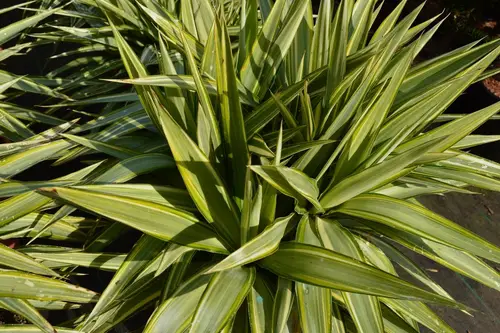
What is a Yucca Plant
Yucca plants are a type of desert plant that belong to the family Asparagaceae. These plants are known for their sword-shaped leaves and tall, spiky blooms. Yuccas are native to arid regions of North and Central America, and they are well adapted to hot, dry climates.
There are over 40 species of yucca plants, and they can range in size from small houseplants to towering trees. Some of the most popular types of yuccas include Yucca filamentosa, Yucca gloriosa, and Yucca elephantipes.
Yucca as Houseplants
Yucca plants are popular houseplants because they are easy to care for and can add a touch of desert flair to any room. These plants are known for their striking foliage and ability to thrive in low light conditions.
When growing yucca plants indoors, it is important to provide them with well-draining soil and to avoid overwatering. Yuccas prefer dry soil, and they can be prone to root rot if they are kept too wet.
Yuccas are also known for their air-purifying qualities. These plants can help remove toxins from the air, making them a great addition to any home or office.
Why Is My Yucca Plant Drooping – 4 Common Problems
Yucca plants are known for their hardy nature and ability to thrive in various conditions. However, sometimes they can start to droop, which can be concerning for plant owners. Here are some common causes of drooping in yucca plants:
1. Overwatering and Underwatering
Overwatering is one of the top causes of yucca plants drooping. When a yucca plant is overwatered, the leaves will quickly react by bending and drooping. This can lead to root rot, which can be fatal for the plant.
On the other hand, underwatering can also cause drooping in yucca plants. When a yucca plant is not watered enough, the leaves will start to dry out and turn brown.
To avoid overwatering or underwatering, it is important to check the soil moisture regularly. Yucca plants prefer well-draining soil, so make sure the pot has drainage holes and the excess water can escape.
2. Light and Temperature Conditions

Yucca plants prefer bright, indirect sunlight. If a yucca plant is not getting enough light, it can start to droop. Direct sunlight can also cause the leaves to burn and droop. Temperature changes can also cause drooping in yucca plants. Yucca plants prefer warm temperatures, but sudden drops in temperature can cause the leaves to droop.
To avoid light and temperature issues, make sure your yucca plant is placed in a spot that receives bright, indirect sunlight. Avoid placing it in direct sunlight or near a drafty window.
3. Soil and Drainage Issues
Yucca plants prefer well-draining soil. If the soil is too compact, it can cause the roots to suffocate and lead to drooping. Poor drainage can also cause issues, as excess water can lead to root rot and drooping.
To avoid soil and drainage issues, make sure your yucca plant is planted in well-draining soil and the pot has drainage holes.
4. Pests and Diseases
Pests and diseases can also cause drooping in yucca plants. Mealybugs, scale, spider mites, and aphids can all infest yucca plants and cause drooping.
The snout weevil is another common enemy of yucca plants, as it can cause the plant to droop when the pest lays its eggs in the base of the trunk. Fungal diseases can also cause drooping, as they can lead to white spots and fungal growth on the leaves.
To avoid pest and disease issues, inspect your yucca plant regularly for signs of infestation or disease. If you notice any issues, treat them promptly with the appropriate insecticide or fungicide.
Symptoms and Identification
Yucca plants are generally hardy and easy to care for, but they can still experience issues that cause them to droop or wilt. In this section, we will discuss the symptoms and identification of common issues that cause yucca plants to droop.
1. Wilting and Yellowing Leaves
One of the most common symptoms of a yucca plant that is in distress is wilting or yellowing leaves. When a yucca plant is overwatered, its leaves may turn yellow and droop. On the other hand, if a yucca plant is underwatered, its leaves may also turn yellow and wilt. In both cases, the leaves may eventually fall off the plant.
2. Browning and Waxy Markings
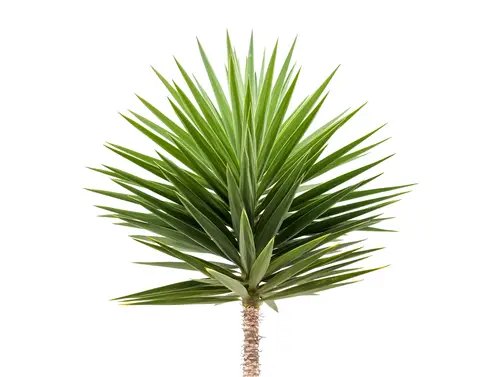
Another symptom of a yucca plant in distress is browning or waxy markings on the leaves. Brown spots on the leaves can be a sign of a fungal or bacterial infection, while waxy markings may indicate an infestation of scale insects.
In either case, it is important to take action to prevent the issue from spreading to other parts of the plant.
3. Leaning and Hard Bumps
If a yucca plant is leaning to one side or has hard bumps on its trunk, it may be experiencing stress or shock. This can be caused by a variety of factors, including changes in temperature or humidity, transplanting, or physical damage.
In some cases, the plant may recover on its own, but it is important to monitor it closely and take steps to prevent further damage.
Reviving a Drooping Yucca Plant
Yucca plants are known for their resilience and ability to thrive in harsh conditions. However, even these tough plants can sometimes become droopy and lackluster. If your yucca plant is drooping, don’t worry, it can be revived with a few simple steps.
1. Adjusting Watering Schedule
One of the most common reasons for droopy yucca plants is overwatering or underwatering. Yuccas are drought-tolerant plants and prefer to be on the dry side. Overwatering can lead to root rot and other fungal diseases, while underwatering can cause the leaves to wilt and turn yellow.
To revive a drooping yucca plant, adjust the watering schedule. Water the plant deeply but infrequently, allowing the top two inches of soil to dry out before watering again. Ensure that the pot has drainage holes and the soil is well-drained. Use a potting mix with added grit to improve drainage.
2. Optimizing Light and Temperature
Yucca plants require bright, direct sunlight to thrive. If your yucca plant is drooping, it may be due to a lack of light or low light conditions. Move the plant to a brighter location, preferably with at least six hours of direct sunlight per day.
Temperature stress can also cause yucca plants to droop. Yuccas prefer warm temperatures between 60-95°F (15-35°C) and can suffer in extreme heat or cold. Keep the plant away from drafty windows or air conditioning vents, and avoid placing it near radiators or heat sources.
3. Improving Soil and Drainage
Poor soil quality and drainage can also cause yucca plants to droop. Yuccas prefer well-drained soil with a slightly acidic to neutral pH. If the soil is too compacted or heavy, it can lead to root rot and other fungal diseases.
To revive a drooping yucca plant, repot it in a well-draining potting mix with added grit to improve drainage. Ensure that the pot has drainage holes and avoid overwatering.
4. Dealing with Pests and Diseases

Yucca plants are generally pest and disease resistant, but they can still be affected by mealybugs, scale, aphids, spider mites, and snout weevils. These pests can cause the leaves to droop and turn yellow.
To revive a drooping yucca plant affected by pests, use insecticidal soap, horticultural oil, or rubbing alcohol to kill the bugs. For fungal diseases, use a fungicide according to the manufacturer’s instructions.
By adjusting the watering schedule, optimizing light and temperature, improving soil and drainage, and dealing with pests and diseases, you can revive a drooping yucca plant and bring it back to its full glory.
Yucca Plant Care
Yucca plants are relatively easy to care for and can thrive in a variety of conditions. However, proper care is essential to ensure healthy growth and prevent drooping or other issues.
1. Watering and Feeding
Overwatering is a common cause of yucca plant drooping. Yucca plants prefer well-drained soil and should not be watered more than once a week. Allow the soil to dry out slightly between waterings. When watering, make sure to water deeply, so the water reaches the roots.
Feeding yucca plants is not necessary, but if you choose to fertilize, do so sparingly. Too much fertilizer can cause fertilizer burns and damage the plant. Use a balanced fertilizer once a month during the growing season.
2. Light and Temperature Requirements
Yucca plants require plenty of direct sunlight to thrive. They should be placed in a location that receives at least six hours of full, direct sunlight daily. If the plant is not getting enough sunlight, it may droop or become leggy.
Yucca plants can tolerate a wide range of temperatures, but they prefer warm temperatures between 60 and 95 degrees Fahrenheit. Avoid exposing the plant to temperatures below 30 degrees Fahrenheit, as this can damage the leaves.
3. Soil and Repotting
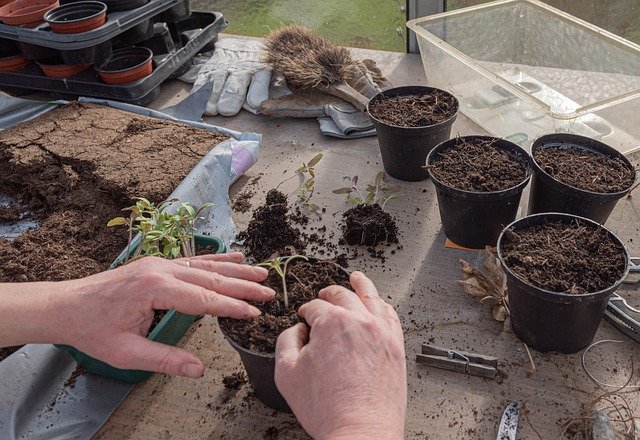
Yucca plants prefer well-drained soil that is rich in grit or sand. A potting mix that contains sand or perlite can help improve drainage. Repotting should be done every two to three years, or when the plant outgrows its current pot. When repotting, use a pot that is only slightly larger than the current one.
4. Pest and Disease Prevention
Yucca plants are generally resistant to pests and diseases, but they can still be susceptible to fungal diseases, mealybugs, scale, aphids, spider mites, and snout weevils.
To prevent these issues, make sure to keep the plant in a well-ventilated area and avoid overwatering. If pests or disease do occur, treat the plant with an appropriate insecticide or fungicide.
By following these simple care tips, you can ensure that your yucca plant stays healthy and vibrant, and avoid drooping or other issues.
Conclusion
A drooping yucca plant can be a result of various factors, including overwatering, underwatering, insufficient sunlight, temperature changes, pests, and fertilizer problems. It is important to identify the root cause of the issue to revive the plant successfully.
Overwatering is a common reason behind drooping yucca plants. Yucca plants are succulents, meaning they store water in their leaves and are adapted to dry conditions. Overwatering can lead to root rot and other fungal diseases, causing the leaves to droop and bend. It is crucial to water yucca plants sparingly and allow the soil to dry out between watering sessions.
On the other hand, underwatering can also cause yucca plants to droop. When a yucca plant lacks water, it may start to wilt and bend, making it look droopy. It is important to ensure that the plant receives enough water, especially during the growing season.
Insufficient sunlight can also cause yucca plants to droop. These plants require bright, direct sunlight to thrive. If they do not receive enough light, they may start to stretch and bend towards the light source, making them appear droopy.
Temperature changes can also cause yucca plants to droop. These plants are adapted to hot, dry conditions and do not tolerate sudden temperature changes well. If the temperature drops suddenly, the plant may start to droop and wilt.
Pests and fertilizer problems can also cause yucca plants to droop. Pests such as spider mites and mealybugs can infest the plant and cause the leaves to droop. Fertilizer problems can also lead to drooping leaves, as too much or too little fertilizer can affect the plant’s overall health.
Frequently Asked Questions
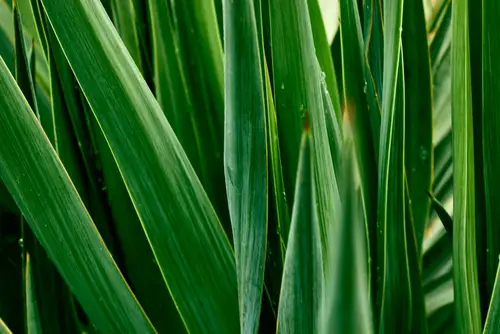
What causes yucca leaves to droop?
Yucca leaves can droop due to a variety of reasons, including overwatering, underwatering, insufficient sunlight, too much fertilizer, pests, and diseases.
Overwatering is the most common cause of yucca plants drooping, as it can cause root rot and damage the plant’s ability to absorb water and nutrients. Insufficient sunlight can also cause drooping leaves, as yucca plants need at least six hours of full, direct sunlight to thrive.
How can I fix my drooping yucca plant?
The best way to fix a drooping yucca plant depends on the cause of the problem. If the plant is overwatered, stop watering it and let the soil dry out before watering it again.
If the plant is underwatered, increase the frequency of watering and ensure that the soil is moist but not waterlogged. If the plant is not getting enough sunlight, move it to a sunnier location. If the plant is affected by pests or diseases, treat it with an appropriate pesticide or fungicide.
What are common reasons for yucca plants to wilt?
Yucca plants can wilt due to various reasons, including overwatering, underwatering, insufficient sunlight, pests, and diseases. Overwatering can lead to root rot and damage the plant’s ability to absorb water and nutrients, while underwatering can cause the plant to wilt due to lack of water.
Insufficient sunlight can also cause wilting, as yucca plants need plenty of direct sunlight to thrive. Pests and diseases can also cause wilting and damage to the plant.
What is the best way to care for a yucca plant?
The best way to care for a yucca plant is to provide it with plenty of direct sunlight, well-draining soil, and occasional watering. Yucca plants are drought-tolerant and do not require frequent watering, but they should be watered deeply when the soil is dry.
Fertilize the plant once a month during the growing season with a balanced fertilizer. Keep an eye out for pests and diseases and treat them promptly to prevent damage to the plant.
How do I know if my yucca plant is getting too much or too little water?
You can tell if your yucca plant is getting too much or too little water by checking the soil moisture level. Stick your finger into the soil up to the second knuckle.
If the soil feels dry, it’s time to water the plant. If the soil feels moist or wet, wait a few more days before watering again. Yellowing or drooping leaves can also be a sign of overwatering, while dry and brittle leaves can indicate underwatering.
What are some signs of a dying yucca plant?
Signs of a dying yucca plant include yellowing or browning leaves, wilting, drooping, and a mushy or rotten stem. If the plant is severely affected by pests or diseases, it may also have visible lesions or discolorations on the leaves or stem.
If your yucca plant is showing signs of decline, it’s important to identify the cause of the problem and take appropriate steps to revive the plant.

Hey, I’m Lisa and I’ve been an avid gardener for over 30 years. I love writing, talking and living in the garden! Feel free to connect with me on my socials below

